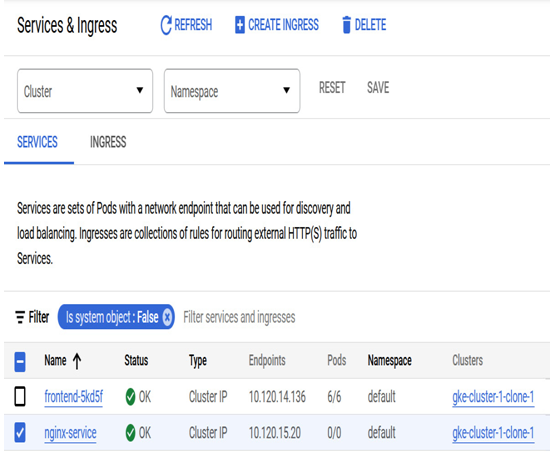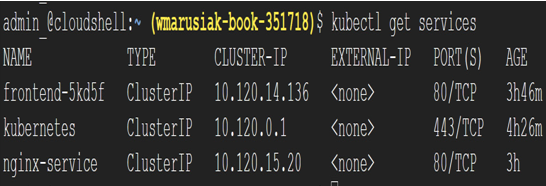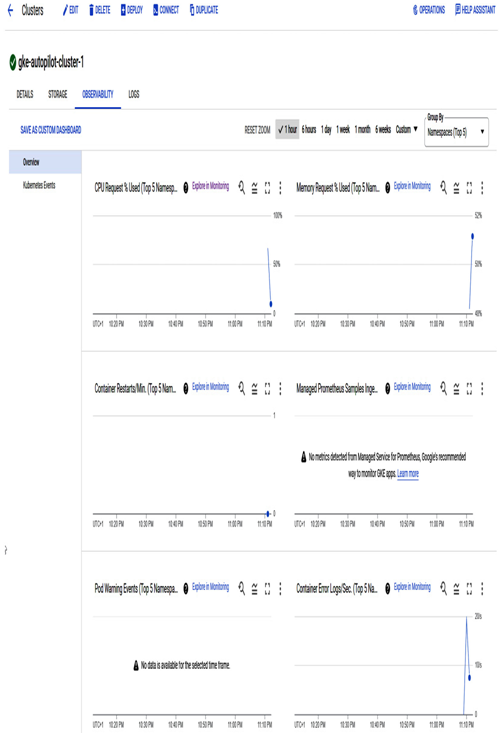Removal of services can be performed in Cloud console and by using the kubectl command-line tool.
Cloud console
In Cloud console, we need to navigate to Services & Ingress, select the desired service to be removed, and click the DELETE button:

Figure 6.70 – Deleting services in Cloud console
After a moment, the service is deleted.
Command line
To remove a service in GKE, we need first to identify services running in the GKE cluster. To list all services, we can use the kubectl get services command:

Figure 6.71 – List of existing GKE services
To delete a service, we need to use the kubectl delete service YOUR_SERVICE_NAME command:

Figure 6.72 – Successful deletion of the service
After completing the section on services, we will move on to another important section of GKE—logging and monitoring.
GKE includes, by default, native integration with Google Cloud Logging and Cloud Monitoring. If desired, you can use Managed Service for Prometheus as well.
When the GKE cluster is created, Cloud Monitoring and Cloud Logging are enabled by default and can be used to observe logs and view monitoring metrics:

Figure 6.73 – OBSERVABILITY section in cluster details
As we will describe Cloud Logging and Cloud Monitoring in Chapter 10, we won’t focus on those topics here.
Containerization of applications isn’t something new; it is a fact. We need it not only to be successful when passing the Associate Cloud Engineer (ACE) certification but also to understand the future of the application deployment. Microservices, containerization, and micro-segmentation are “the now,” and we can’t avoid them. we hope the concept of containers, accompanying services, and various deployment types described in this chapter will help you not only scratch the surface but practically use them in real life as well.
Although we would have liked to dig deeper into some GKE sections, we had to focus on the overall target—passing the ACE cert. Kubernetes and GKE are such exciting topics that many books, blog articles, and videos have been created about them. Topics covered in this chapter are aligned with ACE requirements, but if you wish to dive deeper into GKE, we encourage you to follow up with detailed publications about it.
In the next chapter, we switch gears and move abstraction layers above, where we will learn and deploy containers in Cloud Run, create and run Cloud Functions, and familiarize ourselves with Infrastructure as Code (IaC) by using Terraform.
